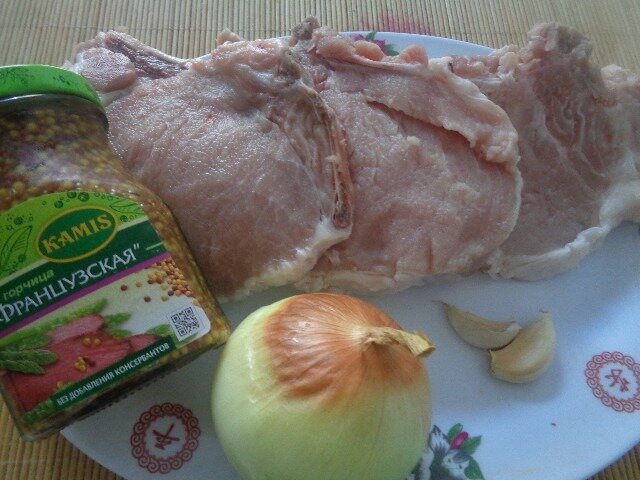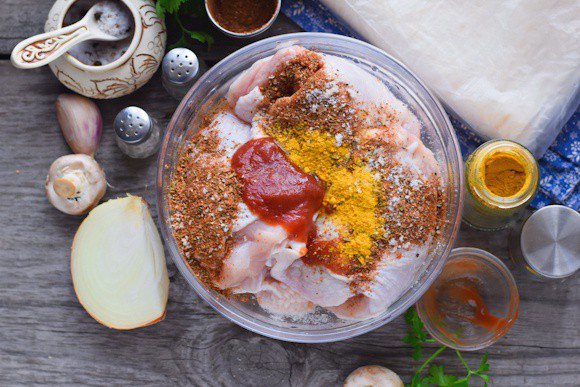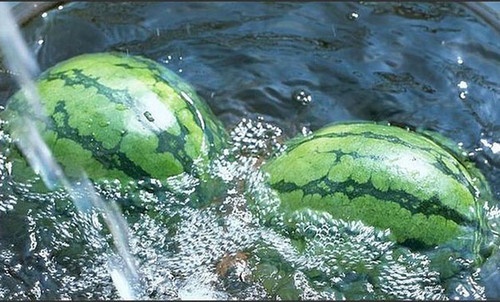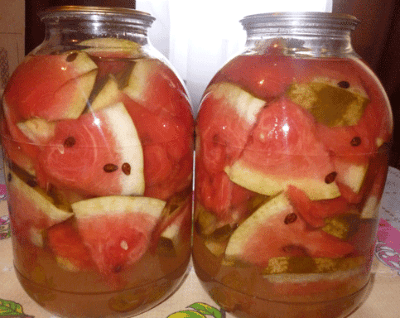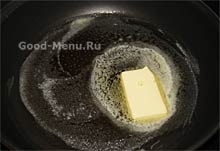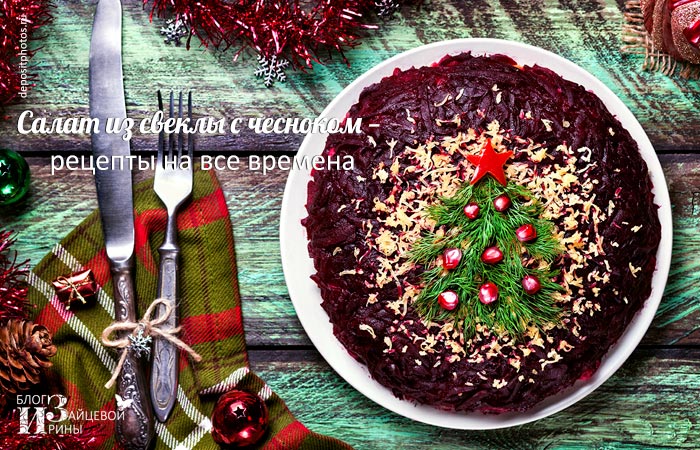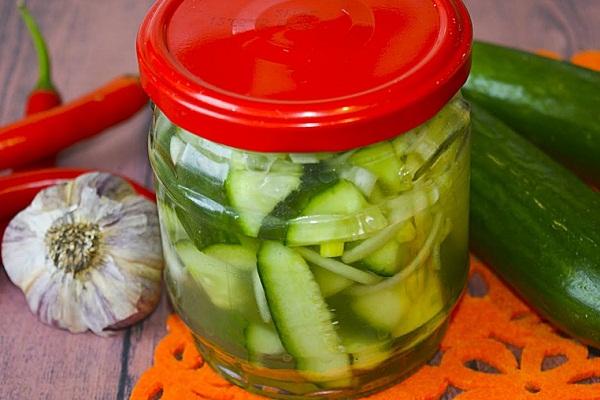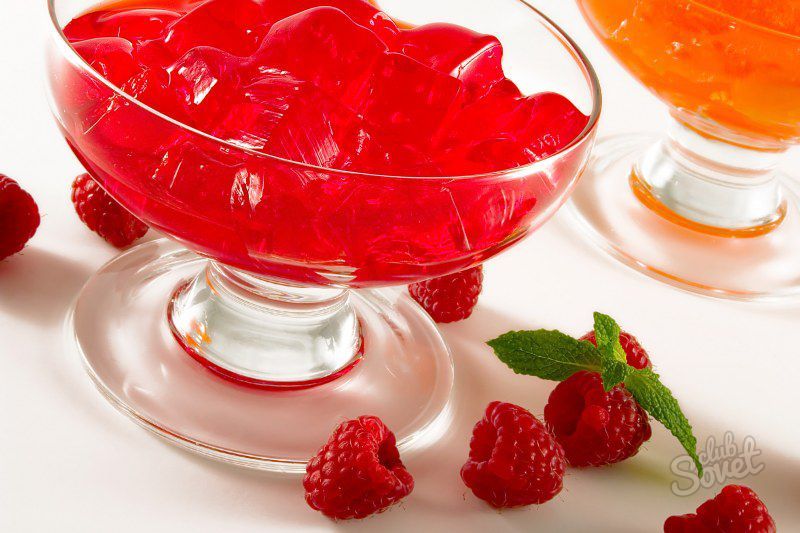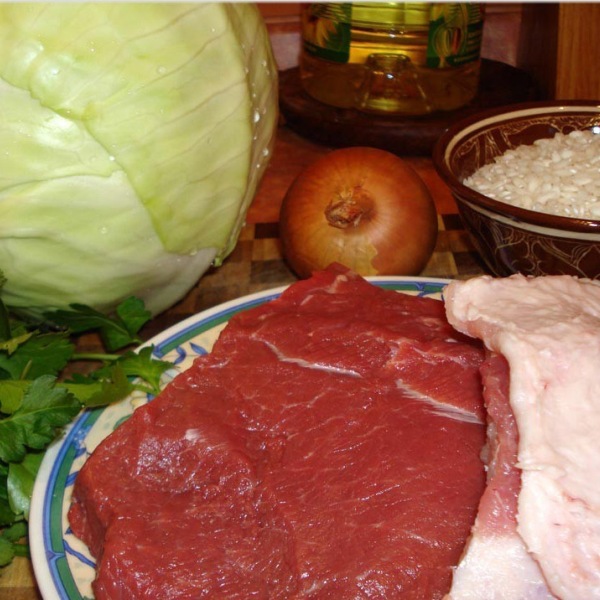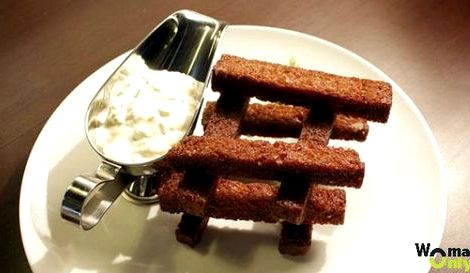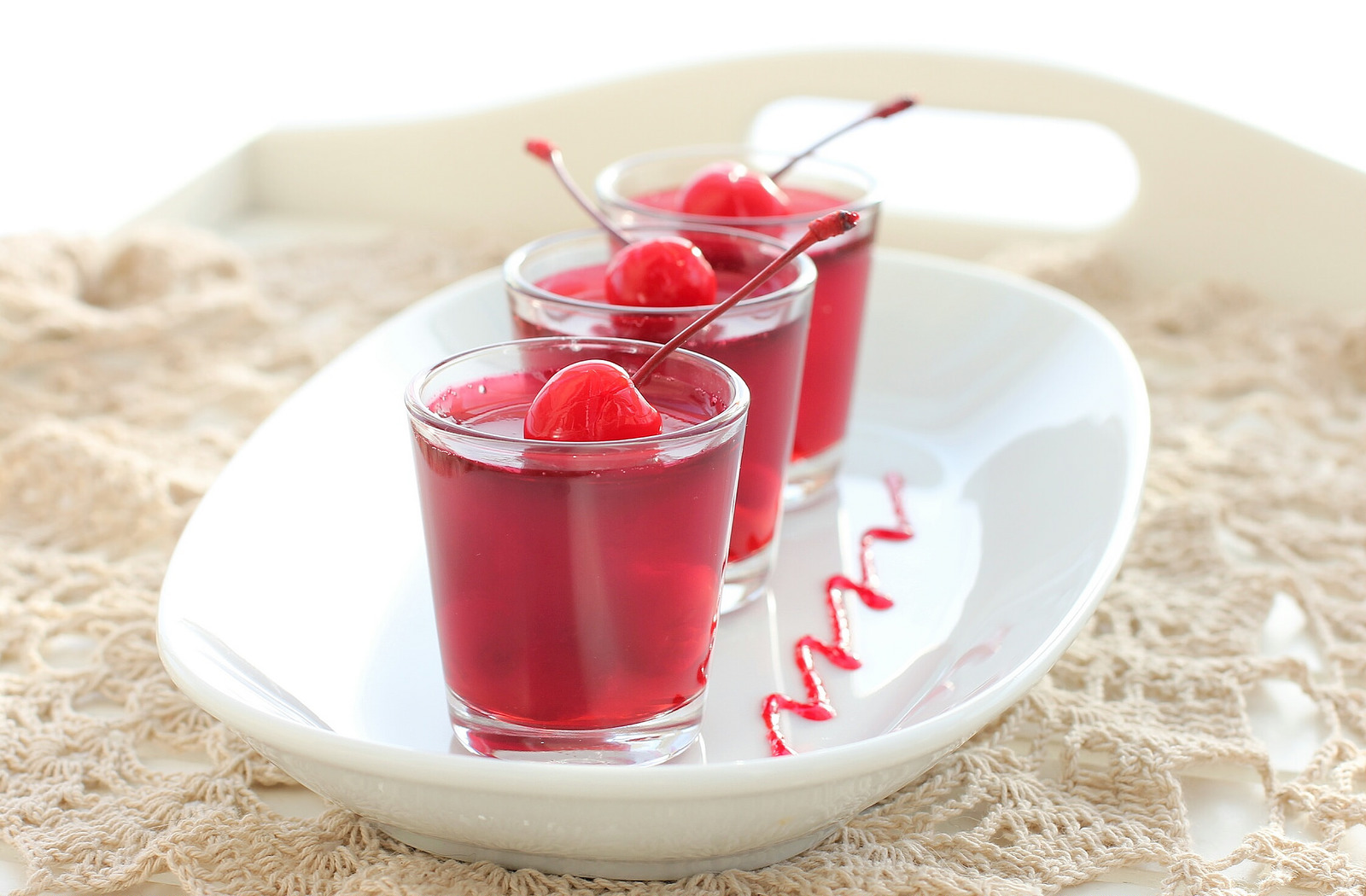Crimean Tatar cuisine recipes. Dishes of the Crimean Tatar cuisine
Discovering local cuisine is an exciting part of every journey. However, many tourists who come to rest in the Crimea, believe that since we live in one country, then we have the same national dishes, which means that we should not even look for places that offer something special. And absolutely nothing! Crimean cuisine will offer many unusual dishes, and some may well become your favorite!
What to try in the Crimea?
The most distinctive dishes of the Crimean cuisine - Tatar. Nowhere except the Crimea, you will not try the national treats of the Crimean Tatars. Meanwhile, even well-known dishes prepared by professional local chefs will gain a new taste. Another argument in favor of the Crimean Tatar cuisine is cheapness: you can hardly find more affordable prices for food in Crimea in 2016.
What will tourists indulge Crimean Tatars? The main dish on the menu - pasties. These "meat pies" (namely, the name is translated from the Crimean Tatar) are prepared here with a special recipe. They are made from flour without yeast, with onions and peppers. According to the classic recipe for the filling, lamb is taken, but both beef and cheese pasties are very tasty. Roast them in oil, heated to 200 ° C. For those who love less fatty foods, Crimean cuisine will offer yantyk - this is the same cheburek, but fried in a dry frying pan without oil.
Another interesting dish is the cuette. This is a juicy pie with lamb, onions and potatoes. Yufahash - tiny dumplings again with lamb, which are eaten with broth. Sarma is a local analogue of stuffed cabbage: meat is wrapped in grape leaves. Lagman is very much loved in the Crimea - a rich soup of lamb with vegetables and special noodles.
Driving along the highways in the direction from Simferopol, you will certainly see big barrels near the road: tandoor samsa is sold here. Be sure to try these patties with lamb and onion, generously seasoned with spices. The prices for such food in the Crimea in 2016 are very affordable, and a rich and tasty lunch is provided! By the way, the quality of the dish is one of the best.
If you are looking for where to eat in the Crimea national cuisine, we can recommend to visit cafes and restaurants in Bakhchisarai - for example, near the Khan's Palace.
Arriving to rest in the Crimea, be sure to try the Black Sea fish and seafood. Even if you are not a fan of such dishes, we assure: prepared from fresh products, they will be much tastier.

The most "Crimean" can be called crooks of rapana and mussels. They are grown or caught right off the coast and delivered to restaurants without freezing. In terms of utility, it is difficult to compete with these dishes of the Crimean cuisine: protein, collagen, mineral elements in them are in an easily digestible form. The main secret of cooking seafood is minimal heat treatment. It is enough to keep them in water or in a pan just a few minutes longer than they should be - and they will become rude.
But from fish dishes you definitely need to try red mullet in the Crimea. Its high taste was appreciated by the ancient Romans, buying it "by weight" for silver. It tastes best just fried and seasoned with spices, so the price of food in the Crimea in 2016 will pleasantly surprise. An excellent choice would be Black Sea flounder and mullet. Where to eat delicious fish in the Crimea? We recommend to visit Balaclava: in the numerous restaurants on the embankment you can taste the most delicious dishes of the Crimean cuisine, watching the fishermen and enjoying the magnificent view!

And what's for dessert? The most obvious answer is baklava. Puff pastry with honey and nuts is sold everywhere in the Crimea (though you shouldn’t buy it on the beaches, there is a risk to get sick - read how). You can drink lunch with booze - a low-alcohol drink that is made from raisins, or fragrant tea from the Crimean herbs.
Firstly, Crimean Tatars do not try anywhere else except Crimea, except perhaps in separate places in Kazakhstan and Uzbekistan, where these people were deported after the war. Secondly, it is the most inexpensive and at the same time the highest quality food on the peninsula. Well, and finally, it is so delicious that, having tasted one dish, it is impossible not to try the entire menu.
The rich subtropical nature of Crimea is so densely mixed here with the traditions of the Tatars that the cuisine turned out to be unusually diverse. There is all kinds of meat: fried over an open fire and on coals, stewed, boiled, cooked on a spit, dried and salted. There are thick soups, and pilafs, manti, dolma, and milk and cheese delicacies, and pastries ...

Shurpa

Ingredients
Lamb shoulder blade 1.5 kg
Young potatoes 6 pcs
Fat tail fat 50 grams
Different color sweet peppers 3 pcs
3 carrots
Onions 3 pcs
Tomatoes 2 pcs
Hot peppers 1 pc
Salt, pepper to taste
A set of spices (see the recipe) to taste (2 tablespoons)
Corn 1 cob
Red onion 2 pcs
Garlic 1 head
Cilantro and parsley on the 1st bunch
Lamb peas chickpeas 100 grams
Many of us cook soup in a pan on the stove. By the way, when cooking food in a cauldron and on an open fire, the same dishes are obtained differently than in a saucepan and much tastier. Absolutely the same result gives food cooked in a cast-iron pot and in a Russian stove.
Shurpa is a street ...
Sary burmese

📌 Tasty dish of Crimean Tatar cuisine
Ingredients
Flour - 2-3 cups,
vegetable oil - 2-3 tbsp. spoons (in the dough),
150-200 g of melted margarine (lubricate),
water or whey
salt, seasoning.
Meat (beef or mutton fatter, it is good to add fat tail fat),
potatoes - 1-2 pcs.,
onions - 1-2 pcs.
Prepare the dough: flour, water and vegetable oil, refrigerate.
While the dough is infused, we’ll deal with the filling - chop the meat in a convenient way for us - a meat grinder, blender, cut smaller onions, potatoes into small cubes, mix everything. Add seasonings - pepper, cilantro, zru, you can a couple of cloves of finely chopped garlic, etc.
Divide the dough into 2 parts. Roll each part into a thin layer of round shapes, grease each with oil, lay them on top of each other - it turns out one of the options for puff pastry. Then spread out the filling, roll up, roll in a frying pan greased with oil.
Bake for 30-35 minutes.
Crimean Tatar meal - what is it?

Crimean Tatars are great masters of delicious cooking and no less lovers of a leisurely meal. Any food begins with a cup of strong freshly brewed coffee. Then snacks certainly follow: feta cheese, cheese, olives, sausages, salads from fresh vegetables. In winter, when there are few fresh vegetables, marinades: lecho, pickled and salted vegetables prepared in the fall, and other home-made canned goods. And, of course, freshly baked tandoor cakes.
Only tourists are limited to one or two dishes. In Crimean Tatar families, they take food seriously: they put everything on the table at once: snacks and hot dishes. For breakfast, in addition to snacks, usually milk porridge, cottage cheese and its dishes are eaten, for lunch - lagman, shurpu or yufak ...
PEKHLEVE: TATAR DESSERT

You will need
For the test:
450 g of flour;
2 eggs;
1 cup of milk;
For filling:
300-350 g of sugar;
300-350 g of walnuts;
200-300 g of butter;
300 g of honey;
salt;
For lubrication:
1 yolk;
2 tablespoons of water
Instruction manual
1. Make the dough. Beat eggs, mix with milk, pour flour. Knead a steeper dough than homemade noodles. Roll each part into thin layers more than 1.5 mm thick, the size of ...
PEKHLEVE: TATAR DESSERT

Pahleve is a Tatar variety of baklava, it is prepared without yeast. Baklava oriental sweet - a pastry made from puff pastry with nuts in syrup. It is widely distributed in the cuisines of the eastern peoples: Turkish, Azerbaijani, Crimean Tatar.
You will need
For the test:
450 g of flour;
2 eggs;
1 cup of milk;
For filling:
300-350 g of sugar;
300-350 g of walnuts;
200-300 g of butter;
300 g of honey;
salt;
For lubrication:
1 yolk;
2 tablespoons of water
Instruction manual
1. Make the dough. Beat eggs, mix with milk, pour flour. Knead a steeper dough than homemade noodles. Roll each part into thin layers more than 1.5 mm thick ...
PREPARING THE HOUSE IN BAKHLAV. HISTORY, RULES AND EXCELLENT RECIPE.

Baklava (or baklava) - a popular confectionery made from puff pastry with nuts in syrup, widely distributed in the cuisines of Eastern peoples, especially in Turkish, Azerbaijani, Arab, Crimean Tatar. Bulgarians and Greeks also cook baklava. Very popular in Turkey and Azerbaijan, also in demand in Iran, Turkmenistan and Uzbekistan
According to historian Nuri Janla, the first mention of sweets dates back to the 15th century: “The tradition of making thin pastry for baklava came from the Assyrians. In the cookbook of the Ottoman Sultans Museum in Topkapi Palace, a record of the times of the Sultan of Fatih was preserved, according to which the first “paclava” was prepared in the palace in August 1453 ...

Nohutly - al

This is a fragrant beef stew with boiled chickpeas (Turkish peas). In the Crimean Tatar language, chickpeas is called nohut, hence the name of the dish: food with chickpeas.
Meat (beef) - 1 kg
Chickpea - 1 kg
Onions - 300 gr
Carrots - 200 gr
Vegetable oil - 600 mg
Salt to taste
Red and black ground pepper - to taste
We carefully sort out the chickpeas, wash them with cold water and leave them to stand for 3-4 hours. You can soak it at night. Then add to the chickpea meat edges and seeds for the brew, add water so that it is about twice as much as chickpeas, put on fire and bring to a boil. Remove the foam and continue to cook over low heat until the chickpeas are ready. It may take time for this from 2 ...
Every time you come to Crimea, you feel the unique spicy-meat aroma of local food. All kinds of pilafs and kebabs, pies, pasties, lagmans, bashbarmaki and baklava. Crimean Tatars are preparing long-known and beloved dishes. Both Middle Eastern and Turkish traditions, as well as Central Asian neighbors influenced their cuisine. That is why in the Crimea, both eggplant and samsa are excellently cooked.
The Crimean Tatars have their own dishes, you will not find them in other places, but in the Crimea you should definitely try. Or do it yourself in your kitchen.
Kubete
This meat pie appeared in the Crimean Tatars under Greek influence. Usually it is stuffed with meat, potatoes and onions, but sometimes there are fillings from chicken and rice, or with the addition of cheese.
Dough:
4-5 cups flour
400 g of mutton fat
1 teaspoon of salt
Filling:
700 g lamb
5 onions
4 potatoes
1 bunch parsley
1 bunch of green onions
2-3 tomatoes
Step 1.Sift flour, pour on a cutting board with a slide, in the middle make a recess in which put the fat crushed in a meat grinder or blender. Grind flour and fat thoroughly.
Step 2 Gradually add salted water to the flour and knead the steep dough. Divide it into two parts: for the bottom of the pie, more for the top - less. Grease hands with vegetable oil and pull each part of the dough into a twisted bundle. And then lay the tourniquet in a spiral and leave to stand.
Step 3 Cut the lamb into pieces, do not take out the cartilage. Peel and cut the potatoes into thin slices, onions into thin half rings. Cut greens and tomatoes.
Step 4 Grease the mold. Roll out the bottom of the dough so that it is enough on the sides of the pie. As the dough is rolling, it is necessary to turn the dough. Put in the form.
Step 5. Put the filling on the dough in this order: onions, potatoes, meat, tomatoes and herbs. Salt
Step 6. Roll out the second part of the test a little thinner than the first. Put on top, make a hole in the middle. Pinch the dough along the edge with the bottom.
Step 7 Pour 3 tbsp into the hole broth. Grease the top of the pie with an egg and place in a very hot oven (up to 250 C).
Step 8 When the top turns red, pour another 2-3 tbsp into the hole. broth, reduce the temperature to 200 C. Bake a total of about 1 hour.
Imam Bildi
This dish is common in many cuisines of the East, in the Crimea it is also very fond of. A legend is connected with him: guests came to one very mean imam. He became sympathetic and allowed his wife to cook something from what is in the house. But there were only a couple of eggplants in the garden, along with peppers and tomatoes. And just a little bit of vegetable oil. Therefore, we had to bake the eggplant, and fry the remaining vegetables. The guests looked at the treat and said: “Imam bildy” - which means “imam got rich”. But they tried the dish - it turned out to be unusually tasty. This dish is done differently, eggplant stuffed with other vegetables, do something like casseroles or stews.
4 eggplants
2 onions
4 bell peppers
8 tomatoes
1 head garlic
1 bunch parsley
Frying oil
Salt pepper
Step 1. Wash and cut eggplant in circles, put in salt water for half an hour.
Step 2 Then remove, dry with a towel, put on a baking sheet, greased with a drop of oil, and bake in the oven.
Step 3Peel and finely chop the onion, fry it in oil.
Step 4 Dice the tomatoes and bell peppers, add to the onion, stew, salt and pepper. Chop greens and garlic finely
Step 5 Put hot eggplant on a dish. Above is a portion of vegetables, a little garlic and herbs, then again eggplant and vegetables. Alternate layers in this way until the eggplant and vegetables run out.
Step 6. Sprinkle with herbs and garlic. Cover the dish and let the vegetables cool.
Yantyk
It is very similar to cheburek, but is fried without oil.
1 tbsp vegetable oil
2 cups of water
Step 1. Form the flour in a bowl with a slide, break the egg into the top cavity and pour water and salt. Then add oil and knead the dough. Then leave it for half an hour.
Step 2 Grate the cheese.
Step 3 Cut the dough into small balls, about half a fist. Each ball is rolled separately into a large circle.
Step 4 Put grated cheese in half a circle, cover the minced meat with the second half and pinch the edges.
Step 5. Bake in a dry frying pan, first on one side, then on the other side. Lubricate with melted hot oil. Fold in a deep dish and cover. After 15 minutes you can eat.
Karaite lamb
500 g lamb
1 kg tomato
1 cup meat broth or water
2 onions
3 tbsp butter
2 tsp Sahara
Step 1. Wash the meat, cut into slices.
Step 2 Peel and fry the onion in oil, then add meat to it and fry until pinkish.
Step 3. Wash, scald and peel tomatoes. Finely chop and put into meat. Season with salt and pepper, cover and simmer for 5-7 minutes.
Step 4 Gradually pour in the broth and simmer over low heat. When the meat is soft, add greens, add salt and put sugar.
Sheker kyyyyk
The name is translated from Tatar as "sugar handkerchiefs." They resemble a little brushwood.
2 cups of milk
2.5 cups of milk
1 tbsp sour cream
1 tbsp Sahara
2 tbsp grape vodka
1 cup vegetable oil
4 tbsp powdered sugar
Step 1.Mix milk, sour cream, yolks, sugar, salt and vodka. Sift the flour into the mixture gradually.
Step 2. Knead a cool dough.
Step 3. Roll it out as thin as possible. Cut into triangles.
Step 4 Fry in vegetable oil until golden brown. Sprinkle with powdered sugar. Serve hot.
Booze
500 g oat catch
100 g butter
30 g yeast
2 cups of flour
2 cups sugar
Step 1. Mix cereal and flour in a large bowl.
Step 2. Bring butter to a boil and add to flour. Mix everything thoroughly.
Step 3 Pour in boiling water and stir until a homogeneous mass resembling thick sour cream is formed. Then close the bowl tightly, you can wrap it with a blanket and leave for half an hour. And dilute the mass with boiled water.
Step 4 When the dough is cooled to room temperature - add the diluted yeast, a glass of sugar and leave to ferment for 1-2 hours.
Step 5 Then add more water, mix thoroughly and strain through a sieve or gauze. Then add water to the pomace and strain again. But the buza should not be very liquid, the normal consistency is liquid kefir.
Step 6. Add the remaining sugar and leave to ferment. When the booze rises and becomes sour - you can drink it.
Each national cuisine has its own traditions. Crimean Tatar cuisine today is an interweaving of the traditions of medieval Crimea and the taste traditions of Armenian, Ukrainian, Bulgarian, Turkish, Russian, German cuisine. So, for example, the Crimean Tatar pilaf has changed a lot. Traditionally, the Crimean Tatars cooked it with raisins, barberries, peas, but without carrots. Now, however many people have housewives — there are so many varieties of pilaf, each cooks its own unique one, and each one is different in taste, sometimes quite strongly. Samsa, manti are dishes borrowed by the Crimean Tatars from the Uzbeks during their stay in Uzbekistan.
Butter and mutton fat are abundantly used in dishes. And not only in the main dishes, but also in sweets. For example, sweets made from puff pastry - “sheker kyyyu” were traditionally prepared on sheep’s fat — they layered dough thin as parchment paper, which was then sprinkled with sugar, curled and cut into rhombuses. Then sweet diamonds were fried in oil or baked in an oven. In addition to baking, nuts, dried fruits, fruits, honey and jam were served for dessert. Tatars always cooked jam in the Crimea - cornel, nut, squash, quince, from wild pears and ranetki. Tatars' cornel jam is branded, traditional, and their favorite nuts are walnuts and almonds. Widespread dishes of vegetables (more in the mountain forest zone), varied food from flour and meat products (steppe zone), eat a lot of fish and fish products (South Coast).
Forms of food, types and methods of cooking in the Crimean Tatars took centuries, reflecting the lifestyle and climatic conditions of the place of residence. This is the result of centuries of natural selection of products, their combination and methods of preparation. The cuisine of Crimean Tatars in the steppes is characterized by an abundance of meat, especially lamb, and dough. Mostly it is meat wrapped in dough. All the steppe food, including a few vegetable dishes, is very hearty, and sometimes even very fat and heavy. There is a historical explanation for this. The steppe inhabitants, being cattle breeders and farmers, always worked hard, and often the main meal was in the morning, so satiety should have come quickly and kept for a long time, until sunset. As the Crimean Tatars themselves say, the steppe is meat, flour and milk. Fish was eaten extremely rarely - it is found only in one variant - balyk-kebabs, when fish and rice or potatoes were laid in layers in a pan and stewed, filled with tomato sauce. Mushrooms, on the whole, were banned; they even had an indecent name in the common people. But meat and flour dishes, combined with light fermented milk drinks, are especially honored here.
The southerners ’diet is dominated by a variety of vegetables, cereals and fruits, the most favorite of which are pumpkin and beans. There is even a dish in which both of these products are present. They are boiled separately individually, then they grind the pumpkin to a pasty state, combine with beans, add the onion fried in butter until golden brown, let it boil for several minutes, put bitter capsicum, close the lid and remove from heat. Southerners' pumpkin can be found in any combination: with dough, sugar, honey, dried fruits, pepper, salt, fruits, vegetables, legumes, meat ... Bean soup and young beans stewed with vegetables are popular. They also cook porridge in combination with rice. On the South Bank, in ancient times, vegetables were not only consumed as part of multicomponent dishes and fresh, but also salted. In oak barrels, tomatoes, eggplant and pepper were fermented, covering with lids woven from the vine. Tomatoes were salted with garlic and herbs, without adding water - in this form they salted for several days. Eggplant stuffed with carrots, tomatoes, herbs and garlic and salted under oppression. From apples and grapes, fruit honey was prepared - backmess, which was viscous and sweet.
The Crimean Tatars of the central part of the peninsula (Orta Yolak), due to the geographical features of their place of residence, combined in their kitchen the features of the steppe and south-coastal cuisines. They are happy to cook and eat both meat products and vegetables. Especially like fruits and dried fruits. The third center is the capital of the Crimean Khanate Bakhchisaray, whose inhabitants were distinguished by a love of sophisticated and refined dishes. Here, several unique dishes are prepared for the family - sarma (what is wrapped up, like our cabbage rolls, but not only in cabbage, but more often in grape leaf), dolma (what is stuffed, for example, pepper). This is a very delicate and fragrant bean soup with vegetables, it is pilaf with Crimean oblong pink or very satisfying friable rice, with raisins, barberry, small and low-fat pieces of fresh mutton. And also a lot of vegetables - eggplant, peppers, onions, garlic; fruits - pears, Crimean apples, grapes.
Now that we have examined the traditions of the three centers of Crimean Tatar cuisines separately, we can perhaps pay attention to the methods of preparing certain dishes. After all, it would seem that a dish under the same name at one or another center is prepared in different ways. For example, residents of the Crimean steppe in a dish of minced meat wrapped in cabbage leaves (like cabbage rolls) must put onions, but southerners are limited to tomatoes, carrots and herbs. The northerners call the puff "snail" from a thin simple dough with filling the "Saryburma" and cook it mainly with meat or meat and potatoes, while the residents of the South Coast prefer pumpkin and nut filling, and even call the dish differently - full. Alishke-shorbasy - a rich vegetable soup with eggs and the likeness of dumplings - entered the menu of the legs many centuries ago. This soup is traditionally prepared without meat, with eggs. It, like borsch, is much tastier on the second or third day than on the first. On the South Bank, under this name they know a completely different dish - bean soup with dough, which is cut into small cubes. Another example is a dish such as yufak ash- “small food” (small dumplings with broth). This dish is also prepared in different ways. For example, in Nogai, the broth is often with tomato. My grandmother (yayloboylyu) before serving, fries a little flour in ghee and pours on a spoon on plates. Some just fry the onions in ghee. Kobe in the inhabitants of the steppe Crimea with a broth, in South Coast - without. Chebureks prefer steppes more, South Coast prefer yantykam. It would seem, it seems, but no, there are still differences. Thanks, probably, to such a variety, Crimean Tatar cuisine attracts the attention of guests.
The rich subtropical nature of Crimea is so densely mixed here with the traditions of the Tatars that the cuisine turned out to be unusually diverse.“To visit Crimea and not try the Crimean Tatar cuisine is a sin that was not included in the mortal list because of its obviousness,” said one friend of mine, paraphrasing the words of the poet Alexander Karpov. And one cannot disagree with him. Firstly, Crimean Tatars do not try anywhere else except Crimea, except perhaps in separate places in Kazakhstan and Uzbekistan, where these people were deported after the war. Secondly, it is the most inexpensive and at the same time the highest quality food on the peninsula. Well, and finally, it is so delicious that, having tasted one dish, it is impossible not to try the entire menu.
Traditions and Eclecticism
The rich subtropical nature of the Crimea is so densely mixed with the traditions of the Tatars that the cuisine turned out to be unusually diverse. Here and the meat in all forms: fried on an open fire and over charcoal, stewed, boiled, cooked on a spit, dried and salted. Here and thick soups, and plov, manti, dolma, and milk-cheese delights, and pastries, striking in its diversity. In addition, for centuries the culture of the Crimean Tatars came into contact with the cultures of other nations, and the traditional cuisine absorbed many of their eating habits. Russia, Ukraine, the Caucasian peoples, Turkey and even Greece influenced it and modified the traditions of cooking certain dishes. One has only to look at the sweets that are being prepared by the Crimean Tatars. Next to the traditional aerial lace baklava, originally Crimean Tatar, now necessarily Baku, Turkish baklava and even chak-chak, typical of Kazan Tatars. And miniature Yufahash - well, why not ravioli!

True, even in Crimea itself, the traditions of the cuisine of the steppe Tatars differ from the passions of those representatives of the people who settled along the Black Sea coast. At the first in honor meat and dairy dishes, and the second generously decorate their table with fruits and vegetables. In order to see the Crimean-Tatar cuisine in all its glory, the correspondent of MTRK Mir went to the top of Ai-Petri Mountain, where over the past 10-15 years a whole settlement of Crimean Tatars, who moved here from the coast and from the steppe part, has grown.
In the mountains behind the culinary tops

The main occupation of these people - to treat. In the morning there is a preparation for the reception of guests. A daughter of tanned and weathered people drowns wood-burning stoves, heat cauldrons on them, chop vegetables and chop meat. Many do it in strict silence, waving away from the camera. “During work I do not speak,” explains one of the chefs. - And do not shoot, you distract me. Cooking bustle does not like. "



Tourists and vacationers climbing the mountain, immediately faced with the onslaught of touts, who vied with each other to praise their restaurant or cafe. If tourist groups are suitable, then the cook or the owner goes out personally and reads a whole lecture, talking about the dishes and immediately showing them in all its glory. Artistry, these people do not hold, and go to pull in every second restaurant. It is customary to cook here on the street, in huge cauldrons installed in a hole in a wood-burning stove. The aromas of spices interfere with the resinous smells of the grove on the heated mountain slopes, and they are finely drawn by wood smoke and honey. He and the dried mountain herbs here and trade with trays and cars. Yes, and the owner of any restaurant is ready to gladly endure you the golden and amber banks.

I go through the ranks to tout, asking what they cook. Find out what they do not have. Nobody, for some reason, cooks a kubeta - a traditional Crimean-Tatar lamb pie. I decide that I will stop where I find such a pie. “Kubete? No, we cook at home for ourselves, but not here. Tourists do not know what it is. You are the first to ask, ”young and older, tanned people are smiling. Almost all smiles here sparkle with gold crowns: so beautiful. Finally, an elderly woman catches up with me from a very small cafe. “You wanted a qubet? Go, we prepared for ourselves in the morning, but a piece remained for you. Try it, it's delicious! ”
Getting in. Right in the hall, at the far table, on an embroidered towel the woman in an apron quickly sculpts tiny dumplings - the size of a nail, no more. The fingers of a woman are much larger and incomprehensible how they so quickly cope with almost jewelry work.

“This is Yufahash,” explains restaurant owner Dilyara Asanova. - We have such young dumplings as a young wife on the second day after the wedding. It is believed that she shows her skill and patience. See how tiny they are? To feed the family, you need to learn how to cook them very quickly. The smaller the dumplings, the better. On the spoon should fit 10 to 15 pieces, and even more. "

Yufahash
Yufahash means “small food”. To make such dumplings, it’s better not to roll out the whole dough - it manages to dry out while the work is going. Rolling out a part of the dough, and cutting into tiny squares, the hostess covers part of them with a towel so as not to wind. On the rest she puts on a tiny neat ball of stuffing. Prepare a dozen and sculpts. Instant finger movement - tiny round envelopes are obtained. Then the next ten goes to work. It is better, of course, to make a merry company, but this work can be done by one patient hostess.

For the dough, mix 2 eggs, 200 grams of water, a quarter of a teaspoon of salt. Approximately 0.5 kilograms of flour pour in a bowl in a slide, make a well and pour a mixture of water and eggs into this well. Knead the dough, gradually adding more flour, if necessary. It should be cool, but soft. We roll the dough into a ball, close with a napkin and send to the refrigerator for 40 minutes.
Prepare the stuffing: make minced beef, it’s good to add a little beef or mutton fat in it. Chop the onion with a knife. I use a special grater, and then another chop with a knife. Pieces should be millimeter, so that in every tiny dumpling at least a piece and hit. Mix onion and meat at the rate of one tablespoon of chopped onion per 0.5 kg of beef, add black pepper and salt to taste, a little bit of cold water. Now the stuffing should be thoroughly stirred and beat so that it absorbs water. Then the mass is more plastic and small pieces are separated from it more easily. When pressed on minced water from it should not stand out. Now thinly roll out the dough and cut it into pieces of 1.5 to 1.5 cm or slightly more. We make dumplings, put them on a tray in one layer. Keep in the fridge. In principle, they can be frozen, but we always cook just before the meal.
Cooked dumplings are eaten with broth. Chopped onion cubes should be fried until golden brown in butter, then add 2 tablespoons per two-liter saucepan to boiling water. Salted. Put pelmeni in this broth so that you get thick soup. Bring to a boil and cook for 2-3 minutes. Everything. Pour on deep plates and you can enjoy a leisurely meal. It turns out the first and second course in one.
Shurpa, Laghman and their variants
In the Crimean Tatar cuisine in general, many dishes that look like very thick soup. These are shurpa and lagman.

Shurpa (Shorba, Chorba) - A fragrant lamb soup with coarsely chopped vegetables. Sometimes it is cooked with chickpeas. Peas should be soaked for 4-5 hours before cooking, or just leave it in water overnight. Shurpa is cooked in a cast-iron cauldron.
Half a cup of sunflower oil is poured into a heated cauldron and pieces of mutton are dipped. The meat should be slightly fried, then add 2-3 cloves of finely chopped garlic. When he gets a golden hue, add water. On 1 kg of mutton 2, 5 liters will be required. It is necessary to bring the broth to a boil, remove the foam and boil for 30-40 minutes. Then add 100 g of chickpea and cook for another 1 hour.
Peel vegetables: 500 g potatoes, 3 large carrots, 3 onions, 2 bell peppers. Onions cut into half rings, pepper - large plates, carrots - long pieces obliquely, tomatoes 2-3 pieces. cut into quarters, chop 1 bunch of parsley. Cut the potatoes into halves, you can cut the large ones into quarters, put the very small one whole.
When the meat began to separate from the bones, we add salt and pepper to the broth, put the bay leaf. Lay the shredded vegetables: carrots, then onions and potatoes, let them boil for 5 minutes, add the peppers and tomatoes. Just before the end put the greens and the last time bring to a boil. We make sure that a good piece of meat will certainly fall into each serving. This is a rather fatty and rich soup, a very rich dish, to which lamb gives a thick and distinctive taste.
I must say that in the Crimea they are preparing several variants of shurpy. Tatars living in the steppe part prepare it without sweet pepper and tomato, and on the coast you can find shurpa with vegetables but no chickpeas, in which they put a lot of different greens and raw onion sliced into thin half rings. Sometimes raw or pickled onions are served to the shurpe separately.
Lagman - This is a homemade noodle with thick meat sauce, in which vegetables are cooked.
Cooking noodles. For the dough for 250 g of flour, you will need 130 ml of water, 1 teaspoon of salt and 25 g of vegetable oil. Knead a thick dough, knead it for 10 minutes, and then cover with a napkin and leave for 1 hour. An hour later, you still need to knead the dough, roll it thinly, cut it into squares and roll each into a sausage. Sausages dipped in sunflower oil and leave to rest 10 minutes. Then each roll out and stretch the rolling pin on the table so that it becomes even thinner, but not torn. Again we roll, leave for a while. Then take a sausage, cut with a knife to make very thin strips. We unfold them, fold them in half and four times, take them along the edges and slap them on the table so that they, stretching out, become even thinner, turn into threads. These threads are laid on the table, we act also with all the other blanks.
Bring a large pot of water to a boil, dip the noodles into it and immediately stir it so that it does not stick together. Cook for 3-5 minutes. Water is poured into a separate pan. It is useful for making sauce. Add some vegetable oil to the noodles and mix. Finished noodles can be stored in the refrigerator, put in a bag. In this case, before serving it should be poured boiling water.
For the gravy at the bottom of the cauldron, not heated to the maximum, we drown the interior mutton fat, sliced. It should be 150 grams. When the fat is drowned, we take out the greaves and throw flat long pieces of lamb pulp cut across the fibers (as in the azu). Fry until brown crust.
We clean and cut vegetables. For 400 grams of lamb, you will need 3 bulbs in semi-circles, 2 carrots with large straws, 2 potatoes with straws, 400 grams of tomato diced, 4 sweet peppers slices, 3 finely chopped cloves of garlic, chopped parsley and celery - 100 grams_
When the meat is fried and the juice has evaporated from it, fry the onion in the same place until golden brown, then the carrot, the Bulgarian pepper. Next send the same potatoes. We add salt, add spices: cumin, black pepper and paprika to taste. All mix and simmer for 7-10 minutes. Then add the broth left over from cooking noodles. It should be added so much that the result would not be a soup, but a thick vegetable sauce with meat. Cook a few more minutes. In deep large bowls lay out the noodles, which must be scalded with boiling water before. top with gravy with vegetables and meat and serve on the table.

Cheburek, yantyk, samsa
The most famous and popular dish of the Crimean Tatars - pasties. Che - Borek patty - meat.

Thin meat pies, fried in a large amount of hot oil have become an integral part of the cooking of many Russian housewives, the glory of this dish is so widely spread. In the Crimean Tatar tradition they are made with minced lamb or beef and lamb in half. Another variant of the same pies, but fried in a dry frying pan without oil, is called yantyk.

In the Crimean Tatar cuisine in general a lot of dough. Both from fresh, and from rich, and from puff.
It is absolutely necessary to try tandyr samsa. This is another mutton patty, very nourishing (there are chopped chicken tail fat), with coarsely chopped onions and chopped pieces of meat, spiced up and spiced with spices. However, now they are preparing a more adapted version, with a smaller amount of pepper and spices.
The very same quube pie that I was looking for and found on Ai-Petri is beautiful. This is a closed juicy pie with lamb, potatoes, onions and spices, which is baked in the oven and served like all lamb dishes, hot. In this pie Tatar hostesses leave a small hole on top. When the cake is reddened, 10 minutes before removing it from the oven, put a piece of butter in this hole and add a few tablespoons of hot meat broth. This trick provides the dish extraordinary juiciness and tenderness.
Feast of fuss does not like
Of course, the Crimean Tatars cook and salads, and a lot of cereal and bean dishes that are not found in the restaurants menu. They do not belong to the festive feast, it is everyday food that is eaten at home. As true Muslims, the Crimean Tatars do not recognize pork and use only beef, lamb and poultry. They know a lot about meat here! No wonder the commonly used word shashlik comes from the Crimean Tatar "shish face", "shish" - spit, "face" - for, that is, what is intended for the spit. Different types of lula kebab are cooked on the coals.

The real king of the feast is plov. It is prepared here strictly traditional, without dried fruits, as in Uzbekistan, without chickpeas, as in Tajikistan. But with what solemnity approach to its manufacture! This is a whole holy rite, which does not tolerate the slightest liberties. Everything must be done on time, accurate to seconds. And the onions are reddened to light gold, and the carrots to give the juice, but not soften. Salt the meat in any case impossible. Salt and spices - only when the dish is already laid and slightly boiled rice. The author of the dish masterly supports just such a heat in the oven, which is needed at each stage, otherwise everything will be ruined. And no conversations during work, so as not to miss the right moment to bookmark the next portion of ingredients.

Crimean Tatars are big tea lovers, including herbal tea. Drink it strong, hot, often adding milk. Tea-drinking lasts a long time, and the guest is watered from tiny drinking bowls so that the tea does not have time to cool down, and the hostess constantly shows attention to the guest, adding a fragrant drink. For tea served pastries and honey. This is the most favorite sweetness.
Most of the Crimean Tatar restaurants - halal. It does not sell alcohol. But from the bottom of my heart they love to eat tasty food and they know a lot about it. True, in the Crimea, in order to please non-Muslim guests, the hosts usually do not mind if they bring the wine with them. And indeed, when meeting with such a diverse cuisine, firmly flavored with spices and the chefs' love for their work, how not to raise a toast "for moderation in excesses"!
Tatyana Rubleva

